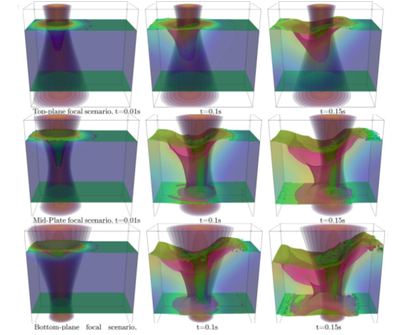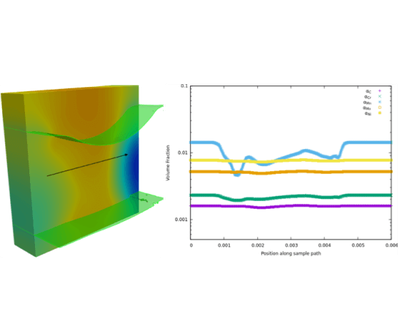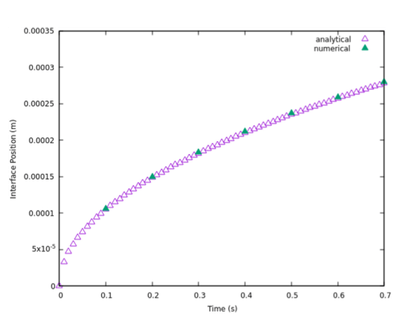


Thermo-capillary stability and evolution in electron beam welding applications
In this work a novel mathematical framework, that fully describes fusion and vapourisation state transitions in multi-component substrates, has been applied to assist in understanding the fundamental mechanisms of thermo-capillary (keyhole) formation and stability during the electron beam welding process. Specifically the role of electron beam divergence, and the location of the beam focal-point within the substrate, is numerically investigated. It is shown that the location of the beam focal point directly influences the keyhole formation dynamics and leads to drastically different keyhole structures. It is further shown that a less divergent electron beam has a greater penetration rate and produces a more stable thermo-capillary. Finally the chemical heterogeneity induced due to preferential element evaporation during the process is explored and significant Manganese loss is predicted from the simulated SA508 steel substrate.
T. F. Flint, T. Dutilleul, and W. Kyffin, “A fundamental investigation into the role of beam focal point, and beam divergence, on thermo-capillary stability and evolution in electron beam welding applications,” Int J Heat Mass Transf, vol. 212, p. 124262, Sep. 2023, doi: 10.1016/j.ijheatmasstransfer.2023.124262.
Information
- Research Area:Material Modelling
- Investigators: Tom Flint
- Publications:https://doi.org/10.1016/j.ijheatmasstransfer.2023.124262
